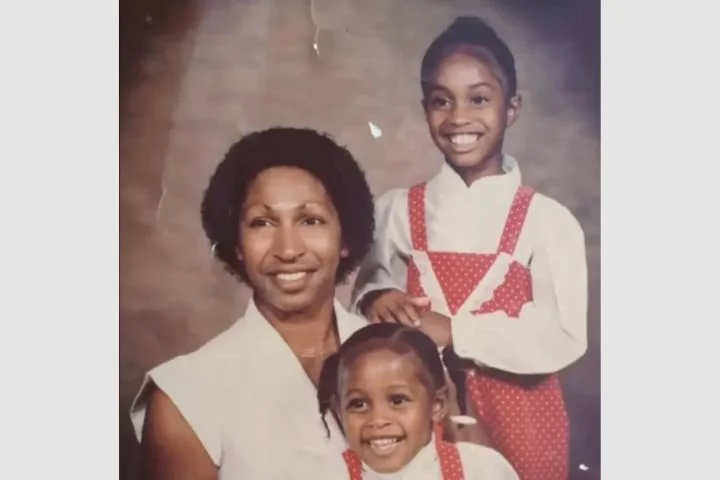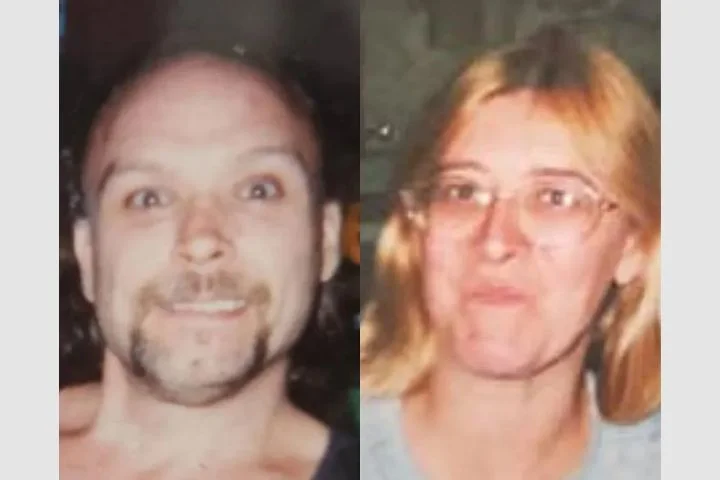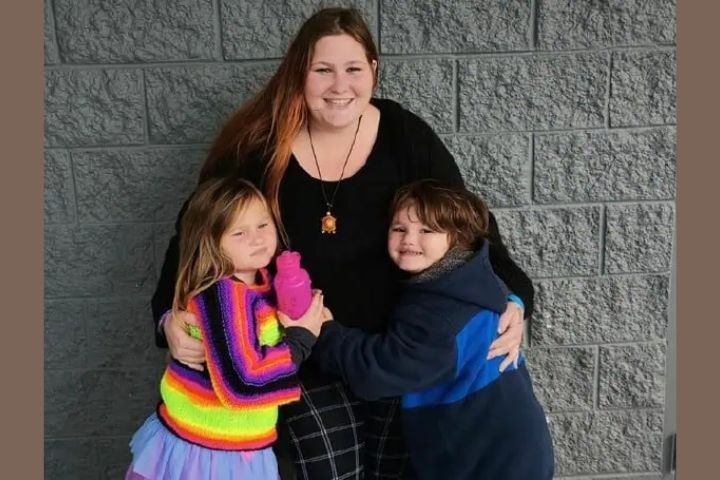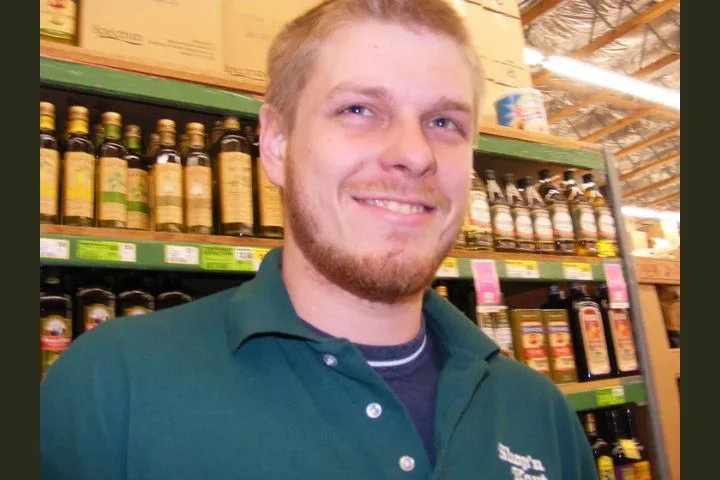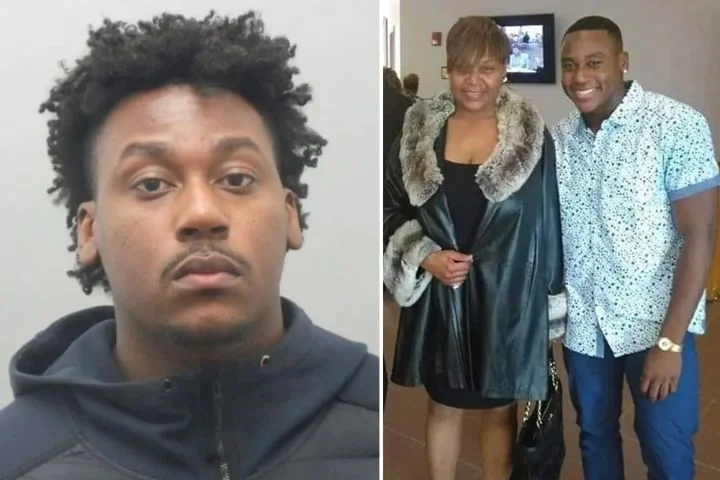Valerie Pride was at a great point in her life. The 24-year-old was in the final year of her four-year apprentice program with the International Brotherhood of Electrical Workers Local 640 and was one of the first female electricians at the Palo Verde power plant in Maricopa County, Arizona. During the summer of 1982, the single mother purchased a new home in a quiet neighborhood of South Phoenix, Arizona, hoping that it would be a good place to raise her two daughters.
On Monday, September 6, 1982, Valerie and her daughters celebrated their first Labor Day in their new home. Unfortunately, it was not a happy occasion; early that afternoon, Valerie’s boyfriend, Ben Daniels, got a phone call telling him that his 9-year-old daughter from a previous relationship had suffered an epileptic seizure while taking a bath and drowned. He had rushed to the hospital where she was taken only to learn that doctors had been unable to save her life.
Shortly before 9:30 pm that night, Valerie called her brother and was chatting with him when she heard a knock on her front door. Since Ben still hadn’t returned home from the hospital, Valerie told her brother she needed to go so she could see who was at the door. Her brother had no idea that it would be the last time he ever spoke to his sister.
Ben arrived home around 10:00 pm and found the front door to the house open despite the 109-degree temperature. When he went inside, he walked directly into a nightmare. Valerie’s daughters, 8-year-old Shontia and 4-year-old Duana, were huddled together in the living room, covered in blood. They had been stabbed to dea*th.
Valerie was also on the floor of the dining room and had been stabbed several times. It looked like she tried to get to the back door but was attacked before she could get there. Ben couldn’t make sense of what he was seeing; all he could do was scream in shock. People in the area heard him crying and called the police.
When police from the Phoenix Police Department got to the scene of the triple m*urder, they were shocked by how brutal it was. To get a break from the chaos, one detective had to go outside. “My God, it’s terrible in there,” he told a reporter. There are stab wounds everywhere.
When Shontia and Duana were found, they were still in their pajamas, so it was clear that they were ready for bed. Detectives thought Valerie had been attacked almost right away after she answered the doorbell. The k*iller probably got out of the house through the back door after the crime. There was a bloody handprint on one of the wooden fence rails in the backyard, which showed that the kil*ler had jumped the fence.
People in the area were shocked by the crime. The neighborhood was mostly quiet and had new homes in the Spanish style. Valerie and her daughters had only lived in their new home for a few weeks. Valerie was a single mother who worked hard and loved her two daughters very much. No one could understand why someone would have wanted her and her kids to die.
Police had a hard time figuring out why three people were ki*lled. News outlets said that one of Valerie’s daughters had been cut up, but none of the victims showed any signs of sexual assault. There were no signs that someone had broken into the house, and nothing seemed to have been taken. That night, the ki*ller or k*illers only wanted to kil*l.
Detectives really wanted to find the person who did the horrible attack, but they quickly ran out of options. They talked to everyone who lived in the south Phoenix neighborhood but couldn’t find anyone who had seen anything strange the night of the mur*der. Most of the people who lived there at the time of the attack were inside with their air conditioners on because it was so hot. People who lived close to Valerie said they heard some noise around 9:45 pm, but it wasn’t loud enough to scare them. No one saw anyone come or go from Valerie’s house.
The investigation stopped, no matter how hard they tried. After six months of not making any progress, homicide detectives stepped up their work. A small group of investigators were sent back to Valerie’s neighborhood to do another sweep of the area. They talked to neighbors again and looked for any clues they might have missed the first time around.
The International Brotherhood of Electrical Workers Local 640 and the Silent Witness program both offered rewards for information that led to the arrest and conviction of the person or people who kil*led the Pride family. They did this in the hopes of finding new leads. There were a few tips, but not many solid leads were found.
As the police talked to neighbors, they kept hearing rumors that Valerie and her daughters were ki*lled as a way to get back at Ben for k*illing his daughter earlier that same day. It wasn’t clear why anyone would blame Valerie for Zeta Daniels’s de*ath, which had been ruled an accident involving drowning at age 9. But the rumors kept going around, and police had to look into them.
In Phoenix, Zeta lived with her mother, Gloria Freeman. Valerie’s new home was about a mile away from their house. Gloria said that she had been watching Zeta while she took a bath, but she had left for a moment. It was thought that Zeta had an epileptic seizure at that point; when Gloria came back from the bathroom, Zeta was submerged in water. Even though she was taken to the hospital right away, the doctors were unable to save her.
An autopsy showed that Zeta’s dea*th was caused by a terrible accident. She had drowned, and the medical examiner said, “The condition of her body was consistent with an epileptic seizure.” It didn’t seem likely that an accident d*eath could have led to a violent triple mu*rder, but police seemed to think it was possible.
Kevin Atkins, 14, was arrested outside of Phoenix’s Chris-Town mall on August 18, 1983. Police thought he was involved in the de*aths of Gloria, Shontia, and Duana. The next day, he was freed, but police made it clear that this did not mean he was no longer a suspect. The Maricopa County District Attorney’s office wanted more proof before they would bring charges against Kevin. Detectives were sure they could provide the proof needed for charges to be brought.
Investigators also said they were still looking for at least two more people they thought had something to do with the crime. They thought that Valerie and her children had been ki*lled with the help of another juvenile and one or more adults. They also thought that the ki*llings were bloodshed in response to the de*ath of Zeta Daniels. Zetta Atkins was Kevin Atkins’s cousin, and Gloria Freeman was his aunt.
At first, detectives seemed sure that they had enough evidence to charge Kevin with the crime. However, it wasn’t clear if they had any physical proof that linked him or anyone else to the mur*ders. No charges were ever brought against him. There were rumors that Zeta’s family had something to do with the mur*der, but these rumors were never proven, and the case quickly died down.
It was thought by investigators that the mu*rders might have had something to do with a break-in at the Pride house in August 1982. When Valerie got home one day, someone had broken in and slashed her waterbed mattress. The burglar then took all of Valerie’s clothes and threw them into the flood of water that came out of the deflated mattress. It wasn’t clear if detectives ever had any leads or suspects in the break-in, but no charges were ever brought.
Two years after the mu*rder, a neighbor of Valerie’s found a knife in their backyard and called the police. It was about the same size as the one that police thought was the mur*der weapon, and they were hoping that it could help them start the investigation. Technicians tried to figure out if it was the knife that was used to ki*ll Valerie, Shontia, and Duana, but they couldn’t.
In 1988, detectives tried again to figure out who k*illed three people. As part of the Silent Witness program, Sgt. Mike Hobel asked everyone who knew something to come forward and talk to detectives, even if they hadn’t wanted to in the past. Some people gave him tips, but no new leads.
Over the years, police have interviewed thousands of people and followed up on hundreds of possible leads. In order to finally solve the case, investigators talked to people from as far away as Ohio. Even though they worked hard, they couldn’t come up with any solid suspects.
Phoenix police detective Bob Brunansky was given the case in 2005. It had been closed for more than 20 years. He was sure that the case could still be solved. “Someone knows who did these crimes, and it’s time for that person to come forward so this can be solved and everyone can be at peace,” he said.
It was hard for Detective Brunansky to understand how someone could have kil*led three people and not feel bad about it, especially since two of the victims were children. “There’s something very sad about the kids. There are two young girls who might have had great futures, but we’ll never know. He begged for help, but no one would listen, and no new leads were found.
It’s been forty years and the crime still hasn’t been solved. Valerie McDonald’s sister Vicky said in June 2022 that the family has never stopped looking for justice for Valerie, Shontia, and Duana. Still, they were shocked by how violent the crime was. “They were ki*lled in cold blood. Who could have hurt little kids like that?”
The two women who knew Valerie best, Vicky and Denice Pride, both said that Shontia and Duana were the most important things in her life. She did everything she could to make sure they had the best life possible. When they moved into their new home in the summer of 1982, they were all excited about the future. The ki*ller took away all of their hopes and dreams.
Detective Dominick Roestenberg is working on the murder of the Pride family as an investigator with the Phoenix Police Cold Case Unit. He said that it was an incredibly horrible crime. “It was brutal and bloody—they were stabbed brutally and over and over again.” Detective Roestenberg wanted justice for Valerie and her kids just as much as the family did.
Investigators think that the k*iller was someone who knew Valerie; they do not believe that this was a random crime. They are currently submitting evidence from the crime scene to be analyzed using advanced technology that wasn’t available at the time of the mur*ders; blood from the fence and unidentified fingerprints found inside the home had already been analyzed in the past but it was possible that they might be able to find something that was missed during the initial stages of the investigation.
Despite the passage of time, Detective Roestenberg remains hopeful that the case will be solved, although he admits that police will likely need help from the public to do so. “There is someone out there that knows what happened to this family.”
Valerie Pride was just 24 years old when she was bru*tally mur*dered in 1982 alongside her two daughters; Shontia was 8 years old when she was k*illed and Duana was 4 years old when she died. Valerie was a hardworking single mother who adored her children and was recognized for being one of the first female electricians at an Arizona power plant. Shontia was a student at Sierra Vista Elementary School; Duana never got the chance to start school before she was mu*rdered. Their family has been waiting for justice for 40 years now; it is long overdue. If you have any information about the triple homicide of Valerie, Shontia, and Duana, please contact the Phoenix Police Department Homicide Cold Case Unit at 602–495–5883 (daytime hours) or 602–262–6141 (nighttime hours) or email them at coldcasehomicide.ppd@phoenix.gov.
